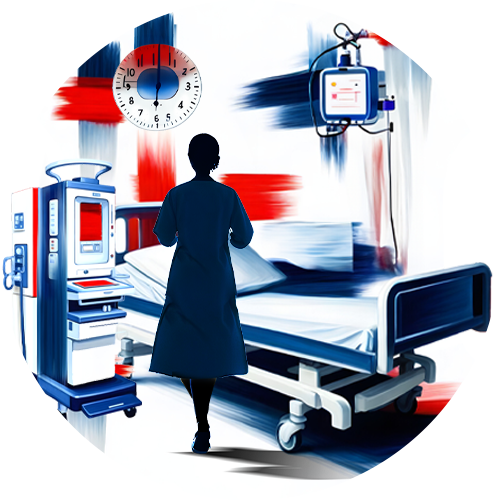On Call: Chapter 1
| April 2, 2024It never entered my mind that this was something that I, Ayala Rubin, could actually do

As told to Shoshana Gross
Welcome to the ER
“T
he heart is a pump,” I remember one of my professors telling us in med school, as he pointed out the various parts on a clinical diagram.
The heart in front of me is… different. It’s pink and soft, the tracery of quivering red veins and arteries both fascinating and strange. And it’s in my hands. I’m squeezing rhythmically — it’s surprisingly easy — over and over, trying to keep the man on the stretcher alive.
IT starts with the piercing ring of my pager and the ominous words, “Code Trauma, Code Trauma,” repeated in that even, passionless voice on the overhead speakers. Before the echoes die away, I’m heading rapidly to the trauma bay. The first few days of my residency were filled with fruitless wandering through the warren of twisting, blindingly white, sterile corridors, but I’m finally making sense of the tangle, and I reach the room swiftly.
Residents and nurses converge from all directions in what looks like a chaotic mess but is really a carefully choreographed scene. The medics wheel a wounded man in on a stretcher, and I take up my place near where the patient’s right leg will be.
“He’s in pretty bad shape,” one of the medics states grimly. “Multiple gunshot wounds to the chest. We had a pulse and then lost it.”
The nurse starts powerful chest compressions, while I grab a cordis IV line that can be used for rapid blood transfusions and carefully insert it into the femoral artery at the crease of the man’s right thigh.
“He needs a thoracotomy,” one of the doctors says tersely. I’ve never seen one before, but I learned the theory so well that I can recite it in my sleep. In medical jargon, it’s called a clamshell thoracotomy, a euphemism for a pretty drastic medical maneuver. A quick incision is made from the sternum to the ribs, a powerful retractor separates the protective cage of rib bones, an axe and mallet crack open the sternum — the bone over the heart — and we can try to save the patient from the inside out.
This patient’s heart isn’t beating on its own, and that’s when I find myself with his heart in my hands, squeezing for his life.
Welcome to the ER.
Oops! We could not locate your form.


